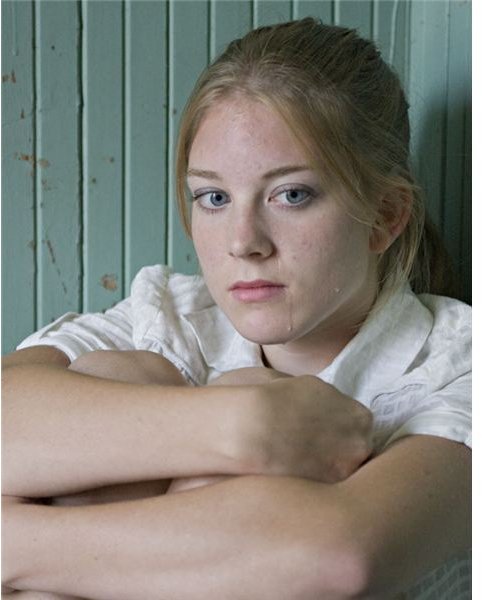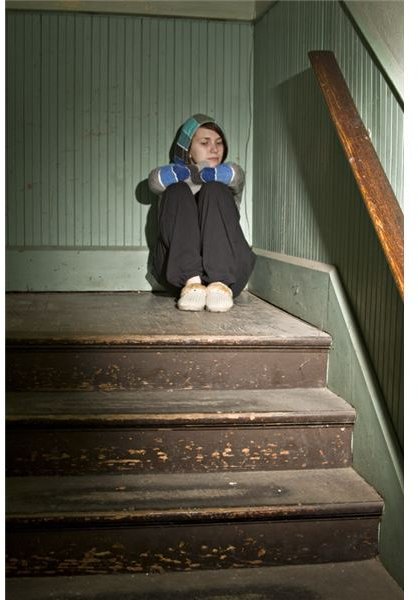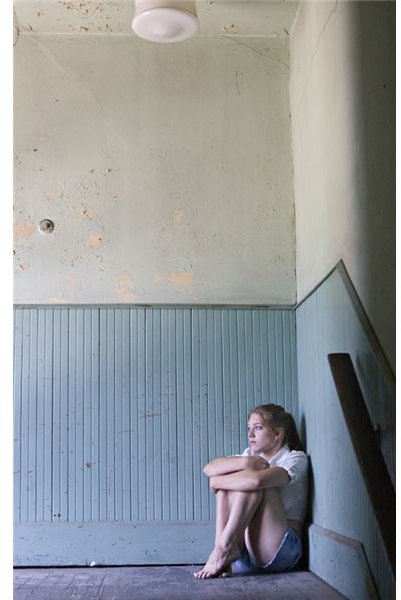Photographing Loneliness - Tips on How to Take Pictures of Emotions
Introduction
Often a photographer is asked to show a particular emotion or feeling in an image. The ability to create an emotional connection between the viewer and the image is an important skill. In this article, we’re going to look at creating a particular emotion, that of loneliness. This is one time when getting in close on your subject isn’t necessarily the best idea. Instead, you can heighten the sense of isolation by backing up from the subject of the image, in this case a young woman, dejectedly sitting by herself in a dingy stairwell. The fact that she can be so all alone in a such a public setting heightens the sense of isolation.


Body language
It helps to have a talented model for such a shot, and Porsche Brosseau, who often works with me, is exceptionally good. There’s more to conveying loneliness than just sitting in a corner, although that is a good starting point. It takes an understanding of non-verbal communication, of body language, to really help make the point that the individual is actually suffering and not just posing. Porsche is drawn up tight, trying to make herself as small as possible as if she can blend into the wall. Her arms are wrapped tightly against her knees, which are pulled up against her body, as she tries to find what little comfort she can in her own company. The fact that she’s not making eye contact with the camera adds to the loneliness since the viewer knows she’s not even aware of their gaze upon her.
The shot was lit entirely by light from a window to the photographer’s left with some light bouncing off the wall to the right to fill in the shadows. This window light was a bit softer than I would have liked for this concept, (hard light would have been more dramatic) but the naturalness of it makes the scene that much more believable.
Another thing that helps sell the concept is the disrepair of the stairwell. It suggests the individual lacks the wherewithal to escape her loneliness and as such is a prisoner of her isolation. By contrast, let’s look at another photo of Porsche shot in exactly the same setting and very similar pose, but with a much tighter composition. While it might be possible to use this one for loneliness, it is much better for sadness.
Here, Porsche is crying (thanks to liquid tears makeup). Because this image is much more intimate and features a direct gaze, it’s a little harder to get the idea of loneliness from the shot, although it certainly is a sad image.
Finally, compare the shot of Porsche with the shot of Christine Mae. While Christine is lit with the harsher light from the flash, the orientation of her body towards the camera makes the shot a little less lonely than the one of Porsche angled to the side. In this case, it seems almost as if Christine was waiting for us to come through the door.
This post is part of the series: Photographing Emotions
There are several techniques and tricks to photographing emotions. These tactics vary depending on the type of emotion you’re trying to capture.
